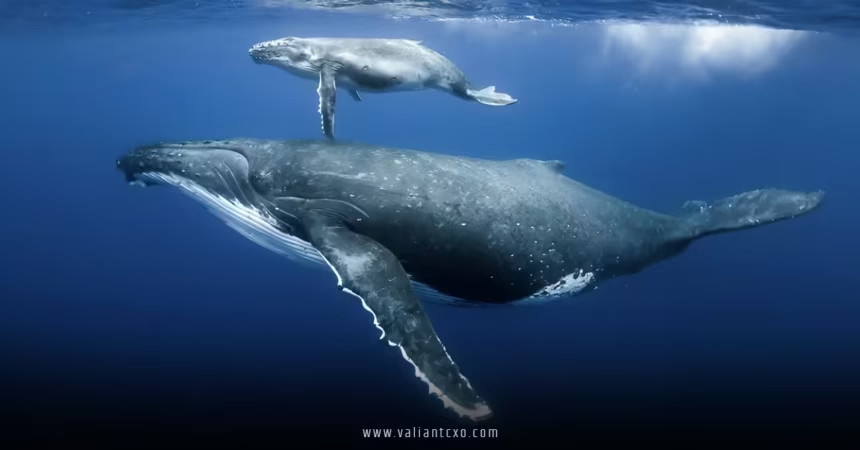Baleen whale migration patterns fascinate me every time I think about them— these massive creatures gliding through vast oceans like silent nomads on an epic road trip. Imagine you’re a baleen whale, weighing up to 200 tons, cruising thousands of miles each year just to eat and have babies. It’s not just a random swim; these journeys follow precise routes shaped by seasons, food, and survival instincts. In this article, we’ll dive deep into what makes baleen whale migration patterns so incredible, from the why and how to the challenges they face today. Whether you’re a whale enthusiast or just curious about ocean life, stick around— you might find yourself hooked on these gentle giants.
Understanding Baleen Whales: The Basics Behind Their Migration
Before we splash into baleen whale migration patterns, let’s chat about what these whales actually are. Baleen whales, or mysticetes if you want to sound fancy, aren’t your toothy orcas or dolphins. Instead of teeth, they’ve got these comb-like plates called baleen hanging from their upper jaws. Picture a giant mustache made of keratin— yeah, the same stuff as your hair— that filters out tiny krill and plankton from seawater. There are about 15 species, including humpbacks, blues, and grays, each with their own twist on baleen whale migration patterns.
These whales are the ocean’s vacuum cleaners, scooping up massive meals in cold, nutrient-rich waters. But why migrate at all? Well, it’s all about balance. Cold polar regions burst with food in summer, but they’re no place to raise a calf— too chilly and predator-packed. So, baleen whale migration patterns take them to warmer tropical spots for birthing and mating. It’s like you heading south for a beach vacation, but way more essential for survival. Have you ever felt that pull to warmer climes in winter? Multiply that by a thousand, and you’ve got a whale’s drive.
Baleen whales come in all sizes, from the “small” minke at 30 feet to the colossal blue whale stretching over 100 feet. Their bodies are built for long hauls: streamlined shapes, thick blubber for insulation, and powerful flukes that propel them like underwater rockets. This setup powers their baleen whale migration patterns, allowing them to cover distances that would tire out even the fittest human athlete.
Why Do Baleen Whales Migrate? Unpacking the Motivations
So, what sparks these incredible baleen whale migration patterns? It’s not wanderlust— it’s pure necessity. Think of it as a seasonal job switch: summer gig in the Arctic or Antarctic for feasting, winter retreat to the tropics for family time. Food is the big driver. In high-latitude feeding grounds, upwelling currents bring nutrients to the surface, sparking plankton blooms that attract krill swarms. Baleen whales gorge here, building up blubber reserves to last through lean times.
But breeding? That’s a warm-water affair. Calves born in cold seas wouldn’t survive the chill, so mothers head to shallow, protected lagoons. Rhetorically, why risk a newborn in icy waters when balmy tropics offer safety? Baleen whale migration patterns also sync with daylight and temperature cues, like nature’s calendar reminding them it’s time to move.
Interestingly, not all baleen whales follow the same script. Some, like certain bowhead populations, stick to Arctic waters year-round if food’s plentiful. But for most, migration is non-negotiable. It’s a high-stakes game: miss the food boom, and starvation looms; linger too long in breeding areas, and energy runs low. These patterns have evolved over millennia, fine-tuned by natural selection to maximize survival.
Key Species and Their Baleen Whale Migration Patterns
Let’s zoom in on specific stars of baleen whale migration patterns. Each species has its own route, like personalized GPS tracks across the globe.
Humpback Whale Migration Patterns: Songs Across Oceans
Humpback whales steal the show with their acrobatic leaps and haunting songs, but their baleen whale migration patterns are equally dramatic. These guys travel up to 5,000 miles one way, from polar feeding spots to equatorial breeding grounds. In the North Pacific, they summer in Alaskan waters, chowing down on krill, then head to Hawaii or Mexico for winter romances.
Picture a humpback family: mom, calf, and maybe an escort, cruising at 3-9 mph. They fast during migration, living off blubber— talk about a crash diet! Southern Hemisphere humpbacks migrate from Antarctic feasts to tropical coasts like Brazil or Australia. Their paths hug coastlines, making them visible to whale watchers. Ever wondered why they sing more in breeding areas? It’s like a whale dating app, attracting mates amid the migration hustle.
Climate tweaks their timing too. Warmer waters might shift prey, nudging humpback baleen whale migration patterns northward. It’s a reminder: these patterns aren’t static; they’re living responses to the ocean’s pulse.
Blue Whale Migration Patterns: The Giants’ Global Trek
Blue whales, the largest animals ever, boast baleen whale migration patterns that span entire oceans. They migrate seasonally, but not as rigidly as humpbacks. In the Eastern Pacific, they feed off California in summer, then south to Mexico’s Gulf of California for birthing. Some cover 4,000 miles, feasting on krill patches that light up like underwater buffets.
Unlike coastal huggers, blues venture into open seas, using deep dives to navigate. Their calls, louder than jet engines, might help coordinate during migration. In the Southern Hemisphere, Antarctic blues head north to subtropical waters. But here’s a twist: some pygmy blues in the Indian Ocean migrate shorter distances, adapting to local food booms.
These patterns highlight blues’ flexibility. If krill shifts due to currents, blues adjust— like savvy travelers rerouting flights. But threats like ship strikes loom larger in open waters, making conservation key.
Gray Whale Migration Patterns: The Epic Coastal Journey
Gray whales hold the record for the longest baleen whale migration patterns, clocking 10,000-14,000 miles round-trip. Eastern Pacific grays summer in the Arctic’s Bering and Chukchi Seas, slurping bottom-dwelling amphipods, then south to Baja California’s lagoons for calving.
They hug the coast, making them easy to spot from California shores. Southbound in December-January, northbound February-May, with moms and calves lagging behind for safety. It’s like a family caravan, dodging predators. Western Pacific grays, once thought extinct, migrate along Asian coasts, a smaller but vital group.
Grays’ patterns face human hurdles: shipping lanes cross their paths, increasing collisions. Yet, their recovery from whaling shows resilience— a hopeful note in baleen whale migration stories.
Other Baleen Whales: Diverse Migration Tales
Don’t forget fin, sei, and minke whales— their baleen whale migration patterns add variety. Fins migrate from Antarctic summers to subtropical winters, covering vast pelagic zones. Seis are nomadic, following food rather than strict routes. Minkes, the smallest, often stay in one hemisphere but shift with seasons.
Bowheads buck the trend, lingering in Arctic ice year-round if openings allow feeding. These variations show baleen whale migration patterns aren’t one-size-fits-all; they’re tailored to each species’ needs, like custom outfits for ocean life.
Factors Influencing Baleen Whale Migration Patterns
What steers these baleen whale migration patterns? It’s a mix of nature’s signals and survival smarts.
Environmental Cues Guiding the Way
Baleen whales use sun position, magnetic fields, and ocean floor topography like built-in compasses. Water temperature and salinity changes signal “time to go.” It’s analogous to birds sensing autumn chill— instinctual, honed by evolution.
Food Availability: The Primary Pull
Krill and plankton blooms dictate feeding ground locations. Upwelling zones in cold waters fuel these feasts, pulling whales north or south. If El Niño disrupts, baleen whale migration patterns adapt, sometimes leading to “skinny” whales from poor feeding.
Breeding and Social Needs
Warm waters mean safer births, less energy lost to cold. Social bonds form during migration, with songs and behaviors strengthening pods. These factors weave a complex web, ensuring baleen whale migration patterns sustain populations.
Impacts of Climate Change on Baleen Whale Migration Patterns
Climate change throws curveballs at baleen whale migration patterns. Warmer oceans shift prey distributions, forcing whales to travel farther or alter routes. Ice melt traps Arctic species like bowheads, while acidifying waters harm krill shells.
In the North Atlantic, humpbacks linger longer in feeding areas due to delayed winters, risking energy imbalances. Rhetorically, what if your grocery store moved 500 miles away? That’s the scramble whales face. Pollution amplifies issues, with plastics ingested during feeds. Overall, climate disrupts the delicate timing of baleen whale migration patterns, threatening survival.
Challenges Facing Baleen Whale Migration Patterns Today
Beyond climate, human activities challenge baleen whale migration patterns. Ship strikes are brutal— imagine a semi-truck hitting a pedestrian at sea. Entanglements in fishing gear trap whales, draining energy mid-migration.
Noise pollution from vessels drowns out calls, disorienting navigators. Overfishing depletes prey, forcing route changes. These hurdles make baleen whale migration patterns riskier, turning ancient paths into obstacle courses.
Conservation Efforts to Safeguard Baleen Whale Migration Patterns
Good news: we’re fighting back for baleen whale migration patterns. International bans on whaling via the IWC have boosted populations. Marine protected areas create safe corridors, like whale highways with speed limits.
Vessel speed reductions in migration zones cut strikes— simple but effective. Gear modifications prevent entanglements, and tracking via satellites informs policies. Organizations like WWF map “blue corridors” for targeted protection. You can help too: support eco-tourism, reduce plastic use. It’s a team effort to preserve these wonders.
In conclusion, baleen whale migration patterns showcase nature’s ingenuity— vast journeys driven by food, family, and instinct. From humpbacks’ songs to grays’ epic treks, these patterns sustain ocean ecosystems. But challenges like climate change demand action. Let’s commit to conservation; after all, protecting these giants enriches our world. Dive into whale watching or advocacy— you won’t regret it.
FAQs
What are the main reasons behind baleen whale migration patterns?
Baleen whale migration patterns primarily revolve around feeding in nutrient-rich cold waters and breeding in warmer tropics to protect calves from harsh conditions.
How does climate change affect baleen whale migration patterns?
Climate change disrupts baleen whale migration patterns by shifting prey locations, altering ocean temperatures, and causing unpredictable ice formations that can trap whales.
Which species has the longest baleen whale migration patterns?
Gray whales boast the longest baleen whale migration patterns, traveling up to 14,000 miles round-trip from Arctic feeding grounds to Baja lagoons.
Can humans observe baleen whale migration patterns easily?
Yes, coastal species like grays and humpbacks make baleen whale migration patterns visible from shores, especially during peak seasons in places like California or Hawaii.
What conservation steps protect baleen whale migration patterns?
Efforts include creating marine protected areas, reducing ship speeds, and modifying fishing gear to minimize threats to baleen whale migration patterns.
For More Updates !! : valiantcxo.com


